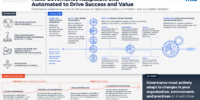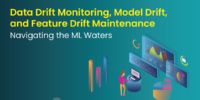In the ever-evolving landscape of data management, organizations are increasingly turning to data lakes as a powerful solution for storing and analyzing vast amounts of diverse data. Designing a robust data lake requires careful planning and consideration of various factors. In this article, we’ll explore some quick tips to help you architect a resilient and effective data lake solution.
1. Clearly Define Objectives and Use Cases
Before diving into the technical aspects, it’s crucial to clearly define the objectives and use cases for your data lake. Understanding the specific needs of your organization will guide the design process and ensure that the data lake aligns with business goals. Whether it’s for analytics, reporting, or machine learning, a well-defined purpose sets the foundation for a successful data lake.
2. Choose the Right Architecture
When it comes to data lake architecture, one size does not fit all. Consider factors such as storage options, data processing engines, and integration capabilities. Whether you opt for a centralized or decentralized architecture depends on your organization’s requirements. Striking the right balance ensures scalability and efficiency.
3. Embrace Data Governance and Security
Data governance is the backbone of any data lake. Implement robust security measures to protect sensitive information and ensure compliance with regulations. Define access controls, encryption policies, and auditing mechanisms to safeguard your data lake from potential threats. A secure data lake builds trust and confidence among users.
4. Prioritize Data Quality and Metadata Management
Quality data is the key to valuable insights. Establish data quality standards and implement processes to cleanse and validate incoming data. Metadata management is equally important for tracking the lineage and understanding the context of data. This not only improves the overall quality of your data lake but also facilitates easier data discovery and analysis.
5. Leverage Automation for Data Ingestion
Efficient data ingestion is critical for a well-functioning data lake. Leverage automation tools to streamline the process of ingesting data from various sources. Whether it’s batch processing or real-time streaming, automation reduces manual errors and accelerates the speed at which data is made available for analysis.
6. Monitor and Optimize Performance
Continuous monitoring is essential to identify performance bottlenecks and optimize resource utilization. Implement monitoring tools to track data lake performance metrics, such as query execution times and resource usage. Proactive optimization ensures that your data lake operates at peak efficiency, delivering faster insights to users.
Conclusion
Architecting a robust data lake involves a combination of strategic planning, technological considerations, and a commitment to data governance. By following these quick tips, you can create a data lake that not only meets the current needs of your organization but also adapts to future challenges. Stay agile, stay secure, and unlock the full potential of your data assets.








